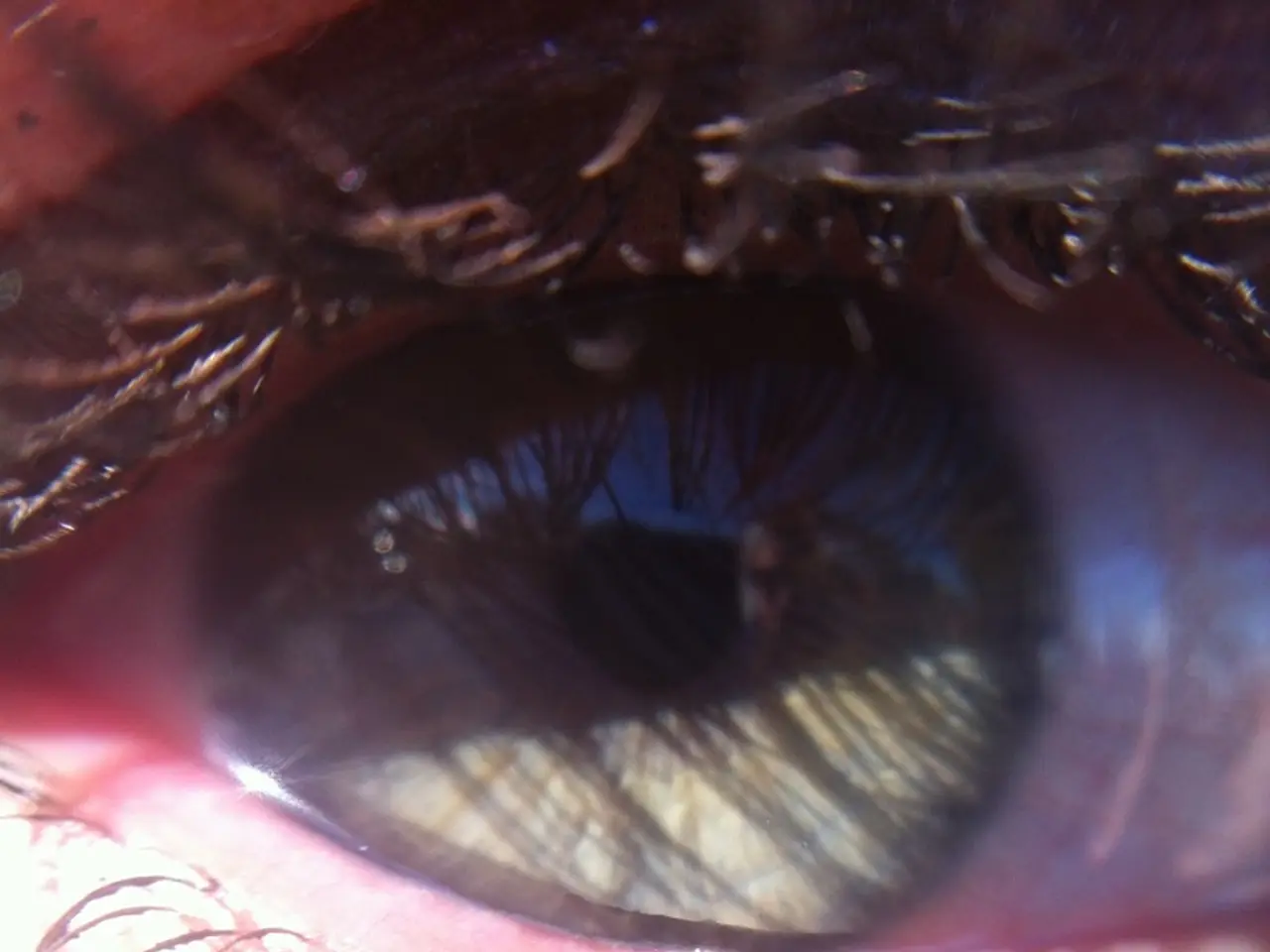Causes of Dry Eye Mucus Production
In the realm of common eye conditions, dry eye is a notable issue that affects a significant number of people in the United States. This condition, characterised by a lack of sufficient lubrication and instability in the tear film, can lead to various symptoms, including stringy or excessive mucus discharge.
The tear film, the thin layer that coats the eye, is composed of three layers: water, meibum, and mucus. The mucus layer, in particular, plays a crucial role in keeping the tear film adhered to the cornea. However, when the eye surface becomes dry due to various reasons, the body may respond by producing excess mucus, often in a stringy form, as a compensatory mechanism to protect and maintain moisture.
This excess mucus production can be triggered by several factors. Underlying inflammation from allergy-related conjunctivitis can disrupt the mucous-producing cells, contributing to abnormal mucus discharge alongside dry eye symptoms. Meibomian gland dysfunction, which reduces the oily tear layer, and damage to conjunctival cells lead to tear film instability, prompting increased mucus secretion to compensate.
Chronic inflammation, autoimmune diseases like Sjögren's syndrome or rheumatoid arthritis, and eyelid or ocular surface irritation heighten mucus production as part of the eye’s inflammatory response, causing stringy discharge. Environmental triggers such as wind, dry air, prolonged screen use, medication side effects like antihistamines and decongestants, and eyelid gland obstruction also contribute to tear film imbalance and mucus buildup in dry eye patients.
Mucus clumping is a symptom of severe dry eye, and managing these conditions may help reduce the effects on tear production and drainage. Limit screen time, take regular breaks, and consult an eye specialist if eyes feel uncomfortable for long periods and affect daily activities. Increasing humidity in the environment can help keep the eyes moist, and staying hydrated can also help reduce dry eye symptoms.
In some cases, prescription eye drops like lifitegrast (Xiidra) or cyclosporine (Restasis) can help the tear ducts make more tears, while wearing sunglasses (preferably wraparound) can protect the eyes from harmful ultraviolet sun rays and dry wind.
A study involving 400 ophthalmology outpatients found that 87.5% of people with eye discharge had dry eye. Blinking regularly during long periods of screen work can help reduce eye discomfort, and people with dry eye might notice small amounts of mucus in the corner of the eye when they wake up.
However, it's important to note that excessive yellow or green discharge from the eye is more likely to be a sign of infection. In such cases, it's crucial to consult an eye specialist for proper diagnosis and treatment.
In summary, stringy mucus discharge in dry eyes largely results from inflammation-induced disruption of the tear film’s mucin layer and compensatory mucus production due to inadequate lubrication and tear instability. This is exacerbated by allergy, gland dysfunction, systemic autoimmune conditions, medications, and environmental factors. By understanding these factors, individuals can take steps to manage and alleviate dry eye symptoms.
- The mucus layer in the tear film, which keeps the tear film adhered to the cornea, can become excessively produced in dry eye conditions due to inflammation or inadequate lubrication.
- A study revealed that 87.5% of people with excessive eye discharge presented dry eye symptoms, suggesting a significant correlation between the two health-and-wellness issues.
- Mental health is also a relevant factor as chronic stress or anxiety can lead to increased dry eyes, exacerbating the dryness and mucus production in the eyes.
- In dealing with dry eye conditions and excessive mucus discharge, medical-conditions like Sjögren's syndrome, rheumatoid arthritis, and Meibomian gland dysfunction may require specific treatments like prescribed eye drops or lifestyle changes, such as reducing screen time and staying hydrated.




